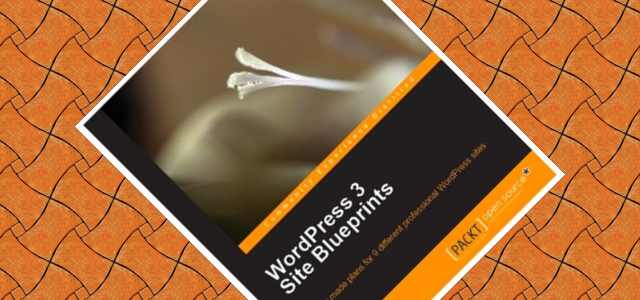
The recently published book, WordPress 3 Site Blueprints by Heather R. Wallace and published by Packt Publishing is an ambitious project that belies the slim volume that it is.
According to the author, the book is primarily geared to a “self-learner” or a “WordPress consultant” who is “interested in exploring all that this open source software has to offer…” The book’s premise is to provide a “blueprint” in the design of 9 different types of WordPress websites. Each blueprint or chapter walks you through the process of configuring a sspecific WordPress Theme. The types of sites (blueprints) discussed are:
1.Migrating a Static site to WordPress
2.Building a Community Portal
3.Building an E-Commerce Website
4.Building a Local Classified Ads Website
5.Building a Consumer Reivew Website
6.Building a Job Board Website
7.Building a Micro blogging Website
8.Building a Local Business Directory
9.Building a Membership Website
In addition to the 9 blueprints, there is an appendix that presents several WordPress plugins that the author feels may be of value such as WP-DB-Backup, Akismet and several others. Another appendix provides a guide to installing WordPress Themes and plugins.
I found the first two chapters to be very helpful. Chapter 1 describes the process of migrating a static HTML site to a dynamic WordPress site. Although the author does not provide specific instruction as how to actually install WordPress, she does direct you to online resources to accomplish that task. A concise discussion gives you the information you need to add appropriate WordPress specific code to your HTML files to turn them into a working WordPress “theme.” Resources are also provided for free and premium ($) themes.
Chapter 2 shows you how to integrate bbPress, BuddyPress and WordPress to enable you to create a community portal site. bbPress provides a forum component, while BuddyPress enables users to interact in a facebook-like manner. The basics are covered but novices may require additional hand-holding to undertake such an ambitious project.
The other blueprints are covered in a similar concise fashion, providing the basic information you would need to get the specific type of site up and running. Each blueprint presents a suggested way of configuring settings and adding specific plugins suited to the particular blueprint.
This slim volume covers a lot of ground. The author provides a lot of additional online resources which is helpful.
What I found most disappointing was that several of the blueprints require “premium” themes or plugins that cost real money. In some cases the plugins or themes are relatively pricey and this may diminish the ability for some people to carry-out the projects.
Overall, WordPress 3 Site Blueprints gives the reader a good idea of where WordPress can take you. It abolishes the notion that WordPress is only for blogging. In fact, WordPress is fast becoming a viable platform for just about any type of CMS site you can imagine. All it takes is the right combination of themes and plugins.
I do wonder whether the book is going to satisfy the inevitable quesitons that a novice will have while the more adept user may desire a deeper exploration of the mechanics of WordPress and plugins.